Project Background
In recent years, noise pollution has become increasingly serious. According to incomplete statistics, in 2020, the total number of environmental noise complaints and reports received by departments such as ecological environment, public security, housing, and urban-rural development in China was about 2.018 million. Among them, social life noise has the highest number of complaints and reports, about 1.083 million cases, accounting for 53.7%. Social life noise, especially square dance noise, causes the most serious disturbance to residents, and school playground noise causes the most serious disturbance to residents.

The problem of campus broadcasting noise disturbing residents has always existed to varying degrees. Some schools are too close to residential areas, the design of broadcasting systems is unreasonable, and the broadcasting range seriously exceeds the playground, which often occurs. This has caused the noise generated by broadcasting to seriously affect the normal life of surrounding residents.

The noise free smart campus broadcasting system is an innovative broadcasting solution that uses directional sound technology to effectively control the direction of sound propagation and avoid noise interference to the surrounding environment. This system is widely used on campus and can achieve functions such as background music playback, notifications, and emergency broadcasting.
Directional sound technology utilizes acoustic principles to propagate sound to specific areas through designated directions and angles. Compared to traditional amplifiers, directional speakers can direct sound towards specific audiences, thereby reducing noise interference in the surrounding environment. This technology can not only be used in indoor environments, but also in outdoor squares, sports venues, and other places.
In school broadcasting, directional sound technology can effectively solve the problem of noise disturbance to the public. Firstly, directional speakers can concentrate sound within a designated audience area, thereby reducing the impact of noise on the surrounding environment. Secondly, directional speakers can control the size and direction of sound, making it clearer and more accurate. Finally, directional sound can avoid the problems of sound rebound and echo, thereby improving the listening experience of the audience.
Directional sound wave
We can hear sound waves in the frequency range of 20Hz-20kHz, with wavelengths ranging from 17 meters to 17 millimeters. According to the formula of wavelength and frequency: λ=V/f, it is not difficult to find that the higher the frequency, the shorter the wavelength. And sound waves have the characteristic of not diffracting objects much larger than their wavelength, so the shorter the wavelength, the stronger the directionality in their transmission direction.
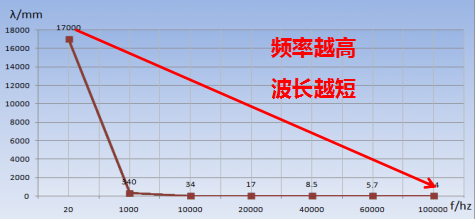
The shorter the wavelength, the worse the diffraction. The worse the diffraction, the stronger the directionality.
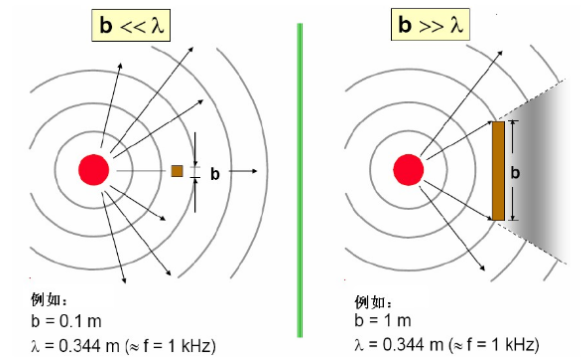
Sound production principle
The directional speaker uses DSP intelligent frequency division, spectrum shifting, beamforming and other technologies and algorithms to intelligently control the full frequency sound within a 60 degree range in front. The sound pressure level can reach 115db at a distance of 2 meters in front and can attenuate up to 40db to below 80db at a distance of 2 meters behind, truly preventing disturbance to residents from the root.

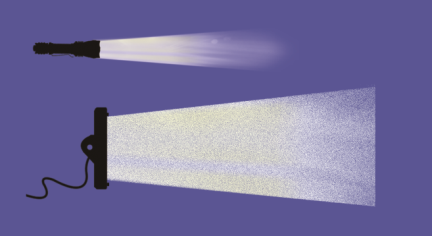
System composition
The noise free smart campus broadcasting system is an innovative solution that is based on the integration of systems and functions such as directional transmission and broadcasting. Starting from meeting the actual needs of the square scene, it optimizes some redundant functions of traditional equipment, thereby forming a solution with innovative advantages such as low cost, flexible configuration, high integration, energy conservation and environmental protection.
Noise free intelligent frequency division directional campus broadcasting all-in-one machine
The noise free intelligent frequency division directional campus broadcasting all-in-one machine adopts directional sound transmission technology, which enables accurate directional propagation of sound and avoids interference with the surrounding environment and residents. At the same time, the integrated body design is easy to install.
Sound field balance: using universal brackets for adjustment to ensure sound field balance;
Frequency division directional: equipped with high-frequency and low-frequency speakers to achieve frequency division output;
Waterproof design: Integrated waterproof body design, suitable for outdoor environments;
Portable installation: wall mounted design, integrated design, more convenient installation;
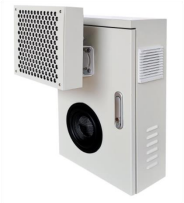
Key parameters
Sound angle: 60 ° cone angle
Maximum transmission distance: 100 meters
Maximum sound pressure level: 1 meter in front ≥ 110db, 1 meter behind ≤ 75db
Power: 200W
Connection method: Fiber optic
Suggested sound field coverage area: 400 square meters to 1000 square meters per unit
75db to 85db within the playground area and below 55db in surrounding residential areas
Supports microphone, USB drive, AUX, RCA input
The microphone music meets the requirements for upper level exercises
Noise free intelligent frequency division directional campus broadcasting split machine
The noise free intelligent frequency division directional campus broadcasting splitter adopts a split design, which facilitates flexible adjustment according to the scene and ensures that there is no noise disturbance outside the designated sound field range.
Beautiful sound quality: Beautiful sound quality, beautiful high notes, and powerful low notes;
Frequency division directional: equipped with high-frequency and low-frequency speakers to achieve frequency division output;
Waterproof design: Integrated waterproof body design, suitable for outdoor environments;
Flexible construction: Adopting a split design, the installation position can be adjusted according to the needs.

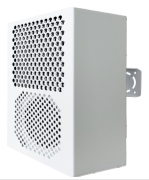
Key parameters
Sound angle: 60 ° cone angle
Maximum transmission distance: 100 meters
Maximum sound pressure level: 1 meter in front ≥ 110db, 1 meter behind ≤ 75db
Power: 200W
Connection method: Fiber optic
Suggested sound field coverage area: 400 square meters to 1000 square meters per unit
75db to 85db within the playground area and below 55db in surrounding residential areas
Supports microphone, USB drive, AUX, RCA input
The microphone music meets the requirements for upper level exercises
Noise free field equalization sound column
Equipped with advanced DSP algorithms, it can ensure balanced sound field in classrooms and venues, with a maximum sound pressure level of 1 meter in front ≥ 95db and 1 meter behind ≤ 80db.
Sound field equalization: using DSP phased array algorithm to adjust the beam deflection angle;
Frequency shift anti howling: perform spectrum analysis on AD post digital signals and remove howling frequencies;
Echo suppression: using high-performance DSP echo cancellation algorithm;
Easy installation: Wall mounted design for convenient installation.

Key parameters
Sound control angle: Eight area beam deflection design for front left and right, middle front left and right, middle rear left and right, and rear left and right
Maximum sound pressure level: 1 meter in front ≥ 95db, 1 meter behind ≤ 80db
Power: 50W
Connection method: microphone, lotus flower
Usage scenarios: regular classrooms, tiered classrooms
system function
1. Directed vocalization
The sound can be controlled in the front 60 ° area, with no sound in other directions, ensuring reduced noise disturbance to the public.
2. Sound field balance
Through scientific and rational sound field design, mutual interference and sound field superposition between equipment are reduced. The equipment adopts universal brackets to adjust the sound angle and ensure sound field balance.
3. Beautiful sound quality
Beautiful sound quality, beautiful high notes, and powerful low notes
4. Energy conservation and environmental protection
The device is specially optimized in terms of energy conservation, capable of automatically sensing audio and automatically shutting down the amplifier power when there is no audio playback, which is energy-saving and environmentally friendly.
5. Intelligent management
It can achieve group control, collective broadcasting and other operations, minimizing resource waste and interference with residents to the greatest extent possible.
6. Diverse interfaces
Equipped with multiple interface inputs such as 6.5mm and 3.5mm, it enables wireless microphone sound input and playback.
7. System compatibility
Compatible with common broadcasting systems in the market, it meets the needs of local sound reinforcement on the playground while also taking into account the ringing of campus broadcasting, and the ringtone is consistent.











